Posted on April 4th, 2010 by Jaimie Schock
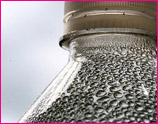 This activity for grades 6-8 provides students with the opportunity to create a food package for a specific food. The students have three components to focus on in the design of their food package. The package will have to keep the food clean, protect or aid in the physical and chemical changes that can take place in the food, and identify the food appealingly.
This activity for grades 6-8 provides students with the opportunity to create a food package for a specific food. The students have three components to focus on in the design of their food package. The package will have to keep the food clean, protect or aid in the physical and chemical changes that can take place in the food, and identify the food appealingly.
Read More
Filed under: Class Activities, Grades 6-8, Grades 6-8, Lesson Plans | 2 Comments »
Tags: Class Activities, Curriculum, Packaging Engineering
Posted on March 29th, 2010 by Jaimie Schock
 The Learning Roomba educational toolkit attempts to address robotics usability issues by keeping total costs down while making the tools as easy to use as possible. This toolkit is a collection of resources and tools to facilitate teaching robotics to pre-college students. Through these resources, students can learn about science, math, and engineering topics in a fun and exciting way.
The Learning Roomba educational toolkit attempts to address robotics usability issues by keeping total costs down while making the tools as easy to use as possible. This toolkit is a collection of resources and tools to facilitate teaching robotics to pre-college students. Through these resources, students can learn about science, math, and engineering topics in a fun and exciting way.
Read More
Filed under: Class Activities, Grades 6-8, Grades 6-8, Grades 9-12, Grades 9-12, Lesson Plans | Comments Off on Curriculum: Learning Roomba
Tags: Building robots, Class Activities, Curriculum, Lesson Plan, Robotics, Technology for Learning
Posted on March 22nd, 2010 by Jaimie Schock
 In this activity for grades 6-8, students gain first-hand experience with the mechanical advantage of pulleys. Students are given the challenge of helping save a whale by moving it from an aquarium back to its natural habitat into the ocean. They set up different pulley systems, compare the theoretical and actual mechanical advantage of each and discuss their recommendations as a class.
In this activity for grades 6-8, students gain first-hand experience with the mechanical advantage of pulleys. Students are given the challenge of helping save a whale by moving it from an aquarium back to its natural habitat into the ocean. They set up different pulley systems, compare the theoretical and actual mechanical advantage of each and discuss their recommendations as a class.
Read More
Filed under: Class Activities, Grades 6-8, Grades 6-8, Lesson Plans | Comments Off on Lesson: Lift and Pull
Tags: Class Activities, Lesson Plan, Mechanical engineering, Physical Science, Physics, Science Lesson Plans
Posted on March 1st, 2010 by ASEE
 Students grades 5-12 assume the role of civil engineers in constructing a model suspension bridge. They learn about other types of spans — including arch, girder, truss, and cantilever — and of the careful balance of compression and tension required in bridge building.
Students grades 5-12 assume the role of civil engineers in constructing a model suspension bridge. They learn about other types of spans — including arch, girder, truss, and cantilever — and of the careful balance of compression and tension required in bridge building.
Read More
Filed under: Class Activities, Grades 6-8, Grades 6-8, Grades 9-12, Grades 9-12, Lesson Plans | 2 Comments »
Tags: Bridge building, Bridge Design, Civil Engineering, Grades 5-12
Posted on February 22nd, 2010 by ASEE
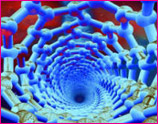
This “Nano Waterproofing” lesson explores how materials can be modified at the nano scale to provide features such as waterproofing and stain resistance. Student teams develop their own waterproofing technique for a cotton fabric and test their design against a fabric that has been altered through nanotechnology applications.
Read More
Filed under: Class Activities, Grades 6-8, Grades 6-8, Grades 9-12, Grades 9-12, Lesson Plans | Comments Off on Lesson: Nano Waterproofing
Tags: Chemical, Class Activities, Design, Grades 6-8, Grades 9-12, Lesson Plans, Nanotechnology
Posted on February 22nd, 2010 by ASEE
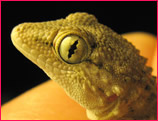 The NanoLeap project represents an approach for teachers to introduce the exciting world of nanoscale science and technology to their classes by integrating interdisciplinary research with traditional science concepts. Investigating Static Forces in Nature: The Mystery of the Gecko is a three-week module that replaces and supplements part of a unit that is normally taught at the beginning of a physical science course.
The NanoLeap project represents an approach for teachers to introduce the exciting world of nanoscale science and technology to their classes by integrating interdisciplinary research with traditional science concepts. Investigating Static Forces in Nature: The Mystery of the Gecko is a three-week module that replaces and supplements part of a unit that is normally taught at the beginning of a physical science course.
Read More
Filed under: Grades 6-8, Grades 9-12, Lesson Plans, Web Resources | 1 Comment »
Tags: Lesson Plans, Nanotechnology, Physics
Posted on February 15th, 2010 by Jaimie Schock
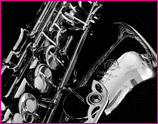 Energy transfer is a central concept in the majority of engineering designs, including designs for musical instruments. In this lesson, students will grasp the concepts of energy and energy transfer, and then apply what they’ve learned by designing and building their own musical instruments.
Energy transfer is a central concept in the majority of engineering designs, including designs for musical instruments. In this lesson, students will grasp the concepts of energy and energy transfer, and then apply what they’ve learned by designing and building their own musical instruments.
Read More
Filed under: Class Activities, Grades 6-8, Grades 6-8, Lesson Plans | Comments Off on Lesson: Energy Transfer in Musical Instruments
Tags: Class Activities, Curriculum, Energy, Lesson Plans, Music engineering
Posted on February 8th, 2010 by Jaimie Schock
 Students build a simulated luge track and make predictions about the impact of surface type, wind resistance, size of slope, and shape of luge on their track; test their predictions by conducting several simulated luge runs; and make conclusions about the effects of physical forces on the sport of luging.
Students build a simulated luge track and make predictions about the impact of surface type, wind resistance, size of slope, and shape of luge on their track; test their predictions by conducting several simulated luge runs; and make conclusions about the effects of physical forces on the sport of luging.
Read More
Filed under: Class Activities, Grades 6-8, Grades 6-8, Grades K-5, Grades K-5, Lesson Plans | 6 Comments »
Tags: Class Activities, Curriculum, Grades 3-8, Lesson Plan, Lesson Plans, Teacher Resources
Posted on January 4th, 2010 by Jaimie Schock
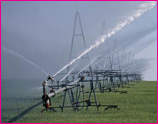 This lesson explores how civil engineering has solved the challenge of moving water through irrigation. Students work in teams to design and build their own model irrigation system out of everyday items. They test their systems, evaluate their results, and present their findings to the class.
This lesson explores how civil engineering has solved the challenge of moving water through irrigation. Students work in teams to design and build their own model irrigation system out of everyday items. They test their systems, evaluate their results, and present their findings to the class.
Read More
Filed under: Grades 6-8, Grades 6-8, Grades 9-12, Grades 9-12, Lesson Plans | 2 Comments »
Tags: Agricultural, Grades 6-8, Lesson Plans, Water management
 This activity for grades 6-8 provides students with the opportunity to create a food package for a specific food. The students have three components to focus on in the design of their food package. The package will have to keep the food clean, protect or aid in the physical and chemical changes that can take place in the food, and identify the food appealingly.
This activity for grades 6-8 provides students with the opportunity to create a food package for a specific food. The students have three components to focus on in the design of their food package. The package will have to keep the food clean, protect or aid in the physical and chemical changes that can take place in the food, and identify the food appealingly.








 The Learning Roomba educational toolkit attempts to address robotics usability issues by keeping total costs down while making the tools as easy to use as possible. This toolkit is a collection of resources and tools to facilitate teaching robotics to pre-college students. Through these resources, students can learn about science, math, and engineering topics in a fun and exciting way.
The Learning Roomba educational toolkit attempts to address robotics usability issues by keeping total costs down while making the tools as easy to use as possible. This toolkit is a collection of resources and tools to facilitate teaching robotics to pre-college students. Through these resources, students can learn about science, math, and engineering topics in a fun and exciting way. In this activity for grades 6-8, students gain first-hand experience with the mechanical advantage of pulleys. Students are given the challenge of helping save a whale by moving it from an aquarium back to its natural habitat into the ocean. They set up different pulley systems, compare the theoretical and actual mechanical advantage of each and discuss their recommendations as a class.
In this activity for grades 6-8, students gain first-hand experience with the mechanical advantage of pulleys. Students are given the challenge of helping save a whale by moving it from an aquarium back to its natural habitat into the ocean. They set up different pulley systems, compare the theoretical and actual mechanical advantage of each and discuss their recommendations as a class. Students grades 5-12 assume the role of civil engineers in constructing a model suspension bridge. They learn about other types of spans — including arch, girder, truss, and cantilever — and of the careful balance of compression and tension required in bridge building.
Students grades 5-12 assume the role of civil engineers in constructing a model suspension bridge. They learn about other types of spans — including arch, girder, truss, and cantilever — and of the careful balance of compression and tension required in bridge building. 
 The NanoLeap project represents an approach for teachers to introduce the exciting world of nanoscale science and technology to their classes by integrating interdisciplinary research with traditional science concepts. Investigating Static Forces in Nature: The Mystery of the Gecko is a three-week module that replaces and supplements part of a unit that is normally taught at the beginning of a physical science course.
The NanoLeap project represents an approach for teachers to introduce the exciting world of nanoscale science and technology to their classes by integrating interdisciplinary research with traditional science concepts. Investigating Static Forces in Nature: The Mystery of the Gecko is a three-week module that replaces and supplements part of a unit that is normally taught at the beginning of a physical science course. Energy transfer is a central concept in the majority of engineering designs, including designs for musical instruments. In this lesson, students will grasp the concepts of energy and energy transfer, and then apply what they’ve learned by designing and building their own musical instruments.
Energy transfer is a central concept in the majority of engineering designs, including designs for musical instruments. In this lesson, students will grasp the concepts of energy and energy transfer, and then apply what they’ve learned by designing and building their own musical instruments.  Students build a simulated luge track and make predictions about the impact of surface type, wind resistance, size of slope, and shape of luge on their track; test their predictions by conducting several simulated luge runs; and make conclusions about the effects of physical forces on the sport of luging.
Students build a simulated luge track and make predictions about the impact of surface type, wind resistance, size of slope, and shape of luge on their track; test their predictions by conducting several simulated luge runs; and make conclusions about the effects of physical forces on the sport of luging.